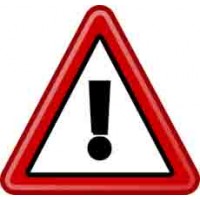Hazards on the Playground

Public Playground Safety Handbook - CPSC Publication 325
U.S. Consumer Product Safety Commission
Playground Hazards
3.5 Suspended Hazards
Children using a playground may be injured if they run into or trip over suspended components (such as cables, wires, ropes, or other flexible parts) connected from one piece of the playground equipment to another or hanging to the ground. These suspended components can become hazards when they are within 45 degrees of horizontal and are less than 7 feet above the protective surfacing. To avoid a suspended hazard, suspended components:
• Should be located away from high traffic areas.
• Should either be brightly colored or contrast with the surrounding equipment and surfacing.
• Should not be able to be looped back on themselves or other ropes, cables, or chains to create a circle with a 5 inch or greater perimeter.
• Should be fastened at both ends unless they are 7 inches or less long or attached to a swing seat.
These recommendations do not apply to swings, climbing nets, or if the suspended component is more than 7 feet above the protective surfacing and is a minimum of one inch at its widest cross-section dimension.
3.6 Tripping Hazards
Play areas should be free of tripping hazards (i.e., sudden change in elevations) to children who are using a play-ground. Two common causes of tripping are anchoring devices for playground equipment and containment walls for loose-fill surfacing materials.
• All anchoring devices for playground equipment, such as concrete footings or horizontal bars at the bottom of flexible climbers, should be installed below ground level and beneath the base of the protective surfacing material. This will also prevent children from sustaining additional injuries from impact if they fall on exposed footings.
• Contrasting the color of the surfacing with the equipmentcolor can contribute to better visibility.
• Surfacing containment walls should be highly visible.
• Any change of elevation should be obvious.
• Contrasting the color of the containment barrier with the surfacing color can contribute to better visibility.
3.4 Sharp Points, Corners, and Edges
Sharp points, corners, or edges on any part of the playground or playground equipment may cut or puncture a child’s skin. Sharp edges can cause serious lacerations if protective measures are not taken. To avoid the risk of injury from sharp points, corners and edges:
• Exposed open ends of all tubing not resting on the ground or otherwise covered should be covered by caps or plugs that cannot be removed without the use of tools.
• Wood parts should be smooth and free from splinters.
• All corners, metal and wood, should be rounded.
• All metal edges should be rolled or have rounded capping.
3.7 Used Tires
Used automobile and truck tires are often recycled as playground equipment, such as tire swings or flexible climbers, or as a safety product such as cushioning under a seesaw or shredded as protective surfacing. When recycling tires for playground use:
• Steel-belted radials should be closely examined regularly to ensure that there are no exposed steel belts/wires.
• Care should be taken so that the tire does not collect water and debris; for example, providing drainage holes on the underside of the tire would reduce water collection.
• Recycled tire rubber mulch products should be inspected before installation to ensure that all metal has been removed.
In some situations, plastic materials can be used as an alternative to simulate actual automobile tires.
